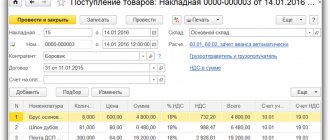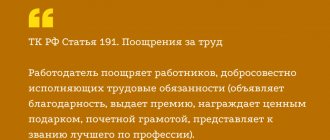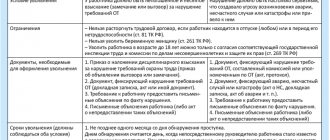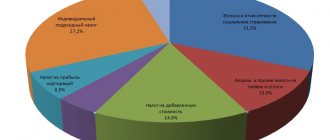For some employees, mandatory medical examinations may be established upon hiring, during their working career, as well as extraordinary ones, depending on their state of health. Such workers, in particular, include workers who work in jobs with harmful or dangerous working conditions. They undergo mandatory medical examinations when applying for a job and periodic medical examinations to determine their health status. This is necessary to understand whether the employee can perform his work duties, as well as to timely diagnose the occurrence of occupational diseases.
Dangerous and harmful production factors
Dangerous and harmful production factors that can worsen the health of the working population have been studied and included in a single list.
IMPORTANT! The list of production factors recognized as dangerous and harmful is contained in Appendix 1 to the order of the Ministry of Labor and the Ministry of Health of the Russian Federation dated December 30, 2020 No. 988n/1420n, which came into force on April 1, 2021. Before this date, one should have been guided by the order of the Ministry of Health and Social Development of Russia dated April 12, 2011 No. 302n. See details here.
ConsultantPlus experts explained what innovations were included in the list according to the new order. Get free demo access to K+ and go to the Review Material to find out all the details of the innovations.
Harmful production factors, as well as hazardous production factors, are combined into 4 main groups:
- chemical;
- biological;
- physical;
- labor process factors.
Hazardous and harmful production factors are classified similarly according to GOST 12.0.003-74: into physical, chemical, biological and psychophysiological.
Each of these sets of hazardous and harmful production factors is specific and will be discussed in subsequent sections.
In order for the factors affecting workers in the process of performing their work functions to be recognized as dangerous and harmful to health, it is necessary to control their presence, magnitude and intensity within the framework of fulfilling the requirements of the Law “On Special Assessment of Working Conditions” dated December 28, 2013 No. 426-FZ.
Explanations from ConsultantPlus will help you understand the intricacies of special assessments and protect yourself from fines. Get trial access to the K+ system and switch to the Standard Situation for free.
New legal regulation of medical examinations from 2021
The specified List of harmful and dangerous factors and work for medical examinations is valid from April 1, 2021 to 04/01/2027 . And the previous one loses its force (approved by order of the Ministry of Health and Social Development dated April 12, 2011 No. 302n).
The main reason for the approval of the new list of harmful and dangerous factors and work for medical examinations is the new procedure for conducting mandatory preliminary and periodic medical examinations of workers. It is enshrined in Order No. 29n of the Ministry of Health dated January 28, 2021 and is also valid from April 1, 2021.
Also see “New procedure for conducting medical examinations of employees from April 1, 2022: what changes.”
The new List of harmful and/or hazardous production factors of labor and work, during which mandatory medical examinations are carried out (preliminary upon entry to work and periodic) was adopted with the aim of:
- elimination of excessive requirements regarding the need to conduct mandatory preliminary medical examinations upon entry to work and periodic medical examinations for employees not working in harmful and/or dangerous working conditions (“regulatory guillotine”);
- bring the names of factors and works in accordance with current legislation and taking into account the development of technology;
- exclude work during which medical examinations of personnel are carried out to prevent the development of infectious diseases.
When ordinary substances turn into hazardous production factors
The same substance can have different effects on employees of the same enterprise. Thus, for a certain group of workers it acts as a dangerous and harmful production factor, but for another it does not pose any threat. For example, for workers at a cement plant, cement is an unfavorable production factor, but it does not have a detrimental effect on the health of the specialists in the financial department of this plant.
IMPORTANT! Adverse health effects occur depending on the route of entry into the body, the time of exposure, or the concentration.
Of no small importance is the state of the employee at the time of exposure to dangerous and harmful production factors, as well as the characteristics of the environment (air temperature, atmospheric pressure level, etc.).
The result of the impact of unfavorable factors on the organisms of different people may also differ - from temporary functional disorders to systemic damage to vital organs and areas.
The difficulty in registering hazardous substances and organizing timely control to reduce the harmful effects on the health and ability to work of workers lies in their unpredictability. The entry of hazardous and harmful substances into the soil, air and water environment is possible not only during work related to the use, transportation, extraction, storage or production of hazardous substances, but also as a result of emergency circumstances (man-made accidents, disasters, etc.).
Lists of harmful, hazardous substances and production factors
ORDER of the Ministry of Health and Medical Industry of the Russian Federation N 280, State Committee for Sanitary and Epidemiological Supervision of the Russian Federation N 88 dated 05.10.95
“ON APPROVAL OF TEMPORARY LISTS OF HARMFUL, DANGEROUS SUBSTANCES AND PRODUCTION FACTORS, AS WELL AS WORK IN WHICH PERFORMANCE IN WHICH PRELIMINARY AND PERIODIC MEDICAL EXAMINATIONS OF WORKERS ARE PERFORMED”
Source of publication: “Russian News”, N 218, 11/16/95 Document status: VALID Note to the document Document text
Registered with the Ministry of Justice of the Russian Federation on November 4, 1995 N 973
MINISTRY OF HEALTH AND MEDICAL INDUSTRY OF THE RUSSIAN FEDERATION N 280
STATE COMMITTEE OF SANITARY AND EPIDEMIOLOGICAL SUPERVISION OF THE RUSSIAN FEDERATION N 88
ORDER dated October 5, 1995
ON APPROVAL OF TEMPORARY LISTS OF HARMFUL, DANGEROUS SUBSTANCES AND PRODUCTION FACTORS, AS WELL AS WORK IN WHICH PERFORMANCE IN WHICH PRELIMINARY AND PERIODIC MEDICAL EXAMINATIONS OF WORKERS ARE CARRIED OUT
In order to protect the health of citizens exposed to occupational risk factors, to prevent occupational and infectious diseases 1. Approve the attached temporary lists of harmful, dangerous substances and production factors, when working with which preliminary and periodic medical examinations of workers are required (Appendix N1); work for which preliminary and periodic medical examinations of workers are required (Appendix No. 2). 2. The heads of health authorities of the constituent entities of the Russian Federation, chief state sanitary doctors for republics, territories, regions, cities of federal significance, autonomous regions, autonomous districts, regions in transport (water, air), heads of organizations of all organizational and legal forms, implement measures to performing mandatory preliminary and periodic medical examinations of employees. 3. Consider appendices No. 1 and No. 2 of the Order of the Ministry of Health of the USSR N555 dated 09.29.89 (NN clauses 1 - 3) to be no longer valid on the territory of the Russian Federation.
Minister of Health and Medical Industry of the Russian Federation E. NECHAYEV Chairman of the State Committee for Sanitary and Epidemiological Surveillance of the Russian Federation E. BELYAEV
Appendix No. 1 to the Order of the Ministry of Health and Medical Industry of Russia and the State Committee for Sanitary and Epidemiological Surveillance of Russia dated 05.10.95 N 280/88 Agreed with the FNPR 19.09.95 N 2510/1109
TEMPORARY LIST OF HARMFUL, DANGEROUS SUBSTANCES AND PRODUCTION FACTORS, WHEN WORKING WITH WHICH PRELIMINARY AND PERIODIC MEDICAL EXAMINATIONS OF WORKERS ARE MANDATORY
Harmful, hazardous substances and production factors: 1. Chemical compounds and elements 1.1. Nitrogen inorganic compounds (ammonia, nitric acid, nitrogen oxides and others) 1.2. Aliphatic aldehydes (saturated and unsaturated) and aromatic formaldehydes, acetaldehyde, acrolein, benzaldehyde, phthalic aldehyde, etc.) 1.3. Aldehydes and ketones, halogen derivatives (chlorobenzaldehyde, fluoroacetone, chloroacetophenone, etc.) 1.4. Amines, amides of organic acids, anilides and other derivatives (dimethylformamide, dimethylacetamide, caprolactam, etc.) 1.5. Beryllium and its compounds 1.6. Boron and its compounds (boron carbide, nitride, etc.) 1.6.1. Borohydrides 1.7. Halogens 1.7.1. Chlorine, bromine, iodine, compounds with hydrogen, oxides 1.7.2. Fluorine and its inorganic compounds 1.7.3. Phosgenes 1.8. Hydrazine and its derivatives (phenylhydrazine, etc.) 1.9. Cadmium and its compounds 1.10. Metal carbonyls: nickel, cobalt, iron, etc. 1.11. Aliphatic and aromatic ketones (acetone, methyl ethyl ketone, acetophenone, etc.) 1.12. Organic acids (formic, acetic, propionic, butyric, valeric, caproic, oxalic, adipic, acrylic, naphthenic, phthalic, etc.) Organic acids halogen derivatives (chloroacetic, trichloroacetic, perfluorobutyric, trichloropropionic, etc.), organic acids anhydrides 1.12.1 . Phthalic acid 1.13. Cobalt 1.13.1. Vanadium, molybdenum, tungsten, niobium, tantalum and their compounds 1.14. Organic silicon compounds (silanes) 1.15. Manganese and its compounds 1.16. Copper and its compounds. Silver, gold and their compounds 1.17. Alkaline metals and their compounds (sodium, potassium, rubidium, cesium, sodium hydroxide, potassium). Alkaline earth metals (calcium, strontium, barium). Rare earth metals (lanthanum, yttrium, scandium, cerium) and their compounds 1.17.1. Lithium 1.18. Arsenic and its inorganic and organic compounds 1.19. Nickel and its compounds 1.20. Ozone 1.21. Organic oxides and peroxides (ethylene oxide, propylene oxide, epichlorohydrin, hydroperoxides, etc.). Inorganic peroxides (perhydrol) 1.22. Tin and its compounds 1.23. Platinum metals and their compounds (ruthenium, rhodium, palladium, osmium, iridium, platinum) 1.24. Mercury and its compounds 1.25. Lead and its compounds 1.25.1. Lead and its inorganic compounds 1.25.2. Organic lead compounds (tetraethyl lead) 1.26. Selenium, tellurium and their compounds 1.27.1. Oxides, acids 1.27.2. Hydrogen sulfide 1.27.3. Carbon disulfide 1.27.4. Tetramethylthiuram disulfide (thiuram) 1.28. Aliphatic (monohydric and polyhydric) and aromatic alcohols, their derivatives (ethyl, propyl, butyl, allyl, benzyl, ethylene glycol, propylene glycol, ethylcellulose, etc.) 1.28.1. Methyl alcohol 1.29. Antimony and its compounds 1.30. Thallium, indium, gallium and their compounds 1.31. Titanium, zirconium, hafnium, germanium and their compounds 1.32. Carbon monoxide 1.33. Aromatic hydrocarbons: benzene 1.33.1. Hydrocarbons aromatic amino- and nitro compounds and their derivatives aniline, m-p-toluidine, nitroaminobenzenes, nitrochlorobenzenes, nitroaminophenols, trinitrotoluene, phenylenediamines, xylitines, anisidines, niazone, etc. 1.33.1.1. Isocyanates (toluene diisocyanate, etc.) 1.33.1.2. o-toluidine, benzidine, beta-naphthylamine 1.33.2. Aromatic hydrocarbons, halogen derivatives (halogen in the benzene ring): chlorobenzene, chlorotoluene, bromobenzene, etc. 1.33.3. Aromatic hydrocarbons, halogen derivatives (halogen in the side chain): benzyl chloride, benzylidene chloride, benzyl trichloride, benzotrifluoryl, etc. 1.34. Aromatic polycyclic hydrocarbons and their derivatives (naphthalene, naphthals, benzo(a)pyrene, anthracene, benzanthrone, benzanthracene, phenanthrene, etc. 1.35. Heterocyclic hydrocarbons (furan, furfural, pyridine and its compounds, pyrazole, piperidine, morpholine, altax, captax etc.) 1.36. Saturated and unsaturated hydrocarbons: aliphatic, alicyclic (methane, propane, paraffin, ethylene, propylene, acetylene, cyclohexane, etc.) Camphor, turpentine 1.36.1. Aliphatic hydrocarbons, halogen derivatives (dichloroethane, carbon tetrachloride, methylene chloride , methyl chloride, chloroform, bromoethyl, trichlorethylene, chloroprene, perfluoroisobutylene, etc.) Vinyl chloride 1.36.2. Hydrocarbons of aliphatic amino and nitro compounds and their derivatives (methylamine, ethyleneimine, hexamethylenediamine, cyclohexylamine, etc.) 1.37. Phenol and its derivatives ( chlorophenol, cresols, etc.) 1.38 Phosphorus and its compounds 1.38.1 Phosphorus and its inorganic compounds (white phosphorus, phosphine, metal phosphides, phosphorus halides, etc.) Red phosphorus 1.38.2. Organic phosphorus compounds: tricresyl phosphate, etc. 1.39. Quinones and their derivatives (naphthoquinones, benzaquinones, hydroquinone, anthroquinone, etc.) 1.40. Chromium, chromic acid, their compounds and alloys (chromates, bichromates) 1.41. Cyanide compounds: hydrocyanic acid, its salts, halogen and other derivatives (potassium cyanide, cyanide chloride, cyanamide, etc.). Organic acid nitrides, acetonitrile, benzonitrile, etc.) Acrylonitrile 1.42. Zinc and its compounds 1.43. Esters (ethyl acetate, butyl acetate, etc.) 1.43.1. Acrylic acid esters: methyl acrylate, butyl acrylate, methyl methacrylate, etc. 1.43.2. Esters of phthalic acid: dibutyl phthalate, dimethyl terephthalate, etc.
Complex chemical mixtures, compositions, chemical substances for a specific purpose&heading=Harmful, hazardous substances and production factors 2. Complex chemical mixtures, compositions, chemical substances for a specific purpose 2.1. Organic dyes and pigments: (azo dyes, benzidine, phthalocyanine, chlorothiazine, anthraquine, arylliptan, thioindigoid, polyester, etc.) 2.2. Pesticides: 2.2.1. Organochlorine (methoxychlor, heptachlor, chlorindane, dochlor, hexachlorobenzene, hexachlorocyclohexane, etc.) 2.2.2. Organophosphorus (metaphos, methylethylthiophos, mercaptophos, methylmercaptophos, karbofos, M-81 rogor. diphlos, chlorophos, glyphosphate, gardona, valekson, etc.) 2.2.3. Organomercury (granosan, mercurbenzene, etc.) 2.2.4. Derivatives of carbamic acids (kotoran, avadex, dichloralurea, methurin, fenuron, sevin, maneb, dicresyl, yalan, eptam, carbation, zineb, etc.) 2.2.5. Derivatives of chlorinated aliphatic acids (chloroacetic acid, etc.) 2.2.6. Derivatives of chlorobenzoic acid 2.2.7. Derivatives of chlorophenoxyacetic acid 2.2.8. Derivatives of chlorophenoxybutyric acid 2.2.9. Halogenated carboxylic acid anilides 2.2.10. Derivatives of urea and guanidine 2.2.11. Derivatives of sim-treazones 2.2.12. Heterocyclic compounds of various groups: zoocoumarin, Morestan-ratindan, pyramine, thiazone 2.3. Synthetic detergents (sultanol, alkylamides, sodium sulfate, etc.) 2.4. Synthetic polymer materials: resins, varnishes, adhesives, plastics, press powders, fibers, cutting fluids 2.4.1. Aminoplastics urea-formaldehyde (carbamide) resins; carboplasts 2.4.2. Polyacrylates, polymethacrylate (plexiglass, plexiglass), polyacrylonitrile, polyacrylamide, etc. - production 2.4.3. Polyamides (nylon, nylon, etc.) 2.4.4. Polyvinyl chloride (PVC, polyvinyl chloride, vinyl plastics, perchlorovinyl resin) 2.4.5. Polyolefins (polyethylenes, polypropylenes) hot processing 2.4.6. Polysiloxanes production 2.4.7. Polystyrenes 2.4.8. Polyurethanes (polyurethane foam, etc.) 2.4.9. Polyesters (lavsan, etc.) 2.4.10. Phenolic plastics (phenolic resin, bakelite varnish, etc.) 2.4.11. Fluoroplastics (polytetrafluoroethylene, teflon, etc.) 2.4.12. Furan polymers 2.4.13. Epoxy polymers (epoxy resins, compounds, adhesives, etc.) 2.5. A mixture of hydrocarbons: oil, gasoline, kerosene, fuel oil, bitumen, asphalt, coal and petroleum tars and pitches, mineral oils and cutting fluids based on mineral oils (incompletely refined mineral oils, shale tars and oils) 2.6. Fertilizers 2.6.1. Phosphorus fertilizers (ammophos, nitrophoska) - production 2.6.2. Nitrogen fertilizers (ammonium nitrate - ammonium nitrate, sodium, potassium, calcium nitrates) 2.7. Pharmacological agents 2.7.1. Antitumor drugs 2.7.2. Sulfonamides 2.7.3. Hormones 2.7.4. Vitamins 2.7.5. Drugs, psychotropic drugs production and use 2.7.6. Medicines not included in paragraphs 2.7.1 - 2.7.5 production and use
ORDER of the Ministry of Health and Medical Industry of the Russian Federation N 280, State Committee for Sanitary and Epidemiological Supervision of the Russian Federation N 88 dated 05.10.95
“ON APPROVAL OF TEMPORARY LISTS OF HARMFUL, DANGEROUS SUBSTANCES AND PRODUCTION FACTORS, AS WELL AS WORK IN WHICH PERFORMANCE IN WHICH PRELIMINARY AND PERIODIC MEDICAL EXAMINATIONS OF WORKERS ARE PERFORMED”
Source of publication “Russian News”, N 218, 11/16/95
Document status VALID
Document Note
Document text
Registered with the Ministry of Justice of the Russian Federation on November 4, 1995 N 973
MINISTRY OF HEALTH AND MEDICAL INDUSTRY OF THE RUSSIAN FEDERATION N 280
STATE COMMITTEE OF SANITARY AND EPIDEMIOLOGICAL SUPERVISION OF THE RUSSIAN FEDERATION N 88
ORDER dated October 5, 1995
ON APPROVAL OF TEMPORARY LISTS OF HARMFUL, DANGEROUS SUBSTANCES AND PRODUCTION FACTORS, AS WELL AS WORK IN WHICH PERFORMANCE IN WHICH PRELIMINARY AND PERIODIC MEDICAL EXAMINATIONS OF WORKERS ARE CARRIED OUT
In order to protect the health of citizens exposed to occupational risk factors, to prevent occupational and infectious diseases 1. Approve the attached temporary lists of harmful, dangerous substances and production factors, when working with which preliminary and periodic medical examinations of workers are required (Appendix N1); work for which preliminary and periodic medical examinations of workers are required (Appendix No. 2). 2. The heads of health authorities of the constituent entities of the Russian Federation, chief state sanitary doctors for republics, territories, regions, cities of federal significance, autonomous regions, autonomous districts, regions in transport (water, air), heads of organizations of all organizational and legal forms, implement measures to performing mandatory preliminary and periodic medical examinations of employees. 3. Consider appendices No. 1 and No. 2 of the Order of the Ministry of Health of the USSR N555 dated 09.29.89 (NN clauses 1 - 3) to be no longer valid on the territory of the Russian Federation.
Minister of Health and Medical Industry of the Russian Federation E. NECHAYEV Chairman of the State Committee for Sanitary and Epidemiological Surveillance of the Russian Federation E. BELYAEV
Appendix No. 1 to the Order of the Ministry of Health and Medical Industry of Russia and the State Committee for Sanitary and Epidemiological Surveillance of Russia dated 05.10.95 N 280/88 Agreed with the FNPR 19.09.95 N 2510/1109
TEMPORARY LIST OF HARMFUL, DANGEROUS SUBSTANCES AND PRODUCTION FACTORS, WHEN WORKING WITH WHICH PRELIMINARY AND PERIODIC MEDICAL EXAMINATIONS OF WORKERS ARE MANDATORY
Harmful, hazardous substances and production factors: 1. Chemical compounds and elements 1.1. Nitrogen inorganic compounds (ammonia, nitric acid, nitrogen oxides and others) 1.2. Aliphatic aldehydes (saturated and unsaturated) and aromatic formaldehydes, acetaldehyde, acrolein, benzaldehyde, phthalic aldehyde, etc.) 1.3. Aldehydes and ketones, halogen derivatives (chlorobenzaldehyde, fluoroacetone, chloroacetophenone, etc.) 1.4. Amines, amides of organic acids, anilides and other derivatives (dimethylformamide, dimethylacetamide, caprolactam, etc.) 1.5. Beryllium and its compounds 1.6. Boron and its compounds (boron carbide, nitride, etc.) 1.6.1. Borohydrides 1.7. Halogens 1.7.1. Chlorine, bromine, iodine, compounds with hydrogen, oxides 1.7.2. Fluorine and its inorganic compounds 1.7.3. Phosgenes 1.8. Hydrazine and its derivatives (phenylhydrazine, etc.) 1.9. Cadmium and its compounds 1.10. Metal carbonyls: nickel, cobalt, iron, etc. 1.11. Aliphatic and aromatic ketones (acetone, methyl ethyl ketone, acetophenone, etc.) 1.12. Organic acids (formic, acetic, propionic, butyric, valeric, caproic, oxalic, adipic, acrylic, naphthenic, phthalic, etc.) Organic acids halogen derivatives (chloroacetic, trichloroacetic, perfluorobutyric, trichloropropionic, etc.), organic acids anhydrides 1.12.1 . Phthalic acid 1.13. Cobalt 1.13.1. Vanadium, molybdenum, tungsten, niobium, tantalum and their compounds 1.14. Organic silicon compounds (silanes) 1.15. Manganese and its compounds 1.16. Copper and its compounds. Silver, gold and their compounds 1.17. Alkaline metals and their compounds (sodium, potassium, rubidium, cesium, sodium hydroxide, potassium). Alkaline earth metals (calcium, strontium, barium). Rare earth metals (lanthanum, yttrium, scandium, cerium) and their compounds 1.17.1. Lithium 1.18. Arsenic and its inorganic and organic compounds 1.19. Nickel and its compounds 1.20. Ozone 1.21. Organic oxides and peroxides (ethylene oxide, propylene oxide, epichlorohydrin, hydroperoxides, etc.). Inorganic peroxides (perhydrol) 1.22. Tin and its compounds 1.23. Platinum metals and their compounds (ruthenium, rhodium, palladium, osmium, iridium, platinum) 1.24. Mercury and its compounds 1.25. Lead and its compounds 1.25.1. Lead and its inorganic compounds 1.25.2. Organic lead compounds (tetraethyl lead) 1.26. Selenium, tellurium and their compounds 1.27.1. Oxides, acids 1.27.2. Hydrogen sulfide 1.27.3. Carbon disulfide 1.27.4. Tetramethylthiuram disulfide (thiuram) 1.28. Aliphatic (monohydric and polyhydric) and aromatic alcohols, their derivatives (ethyl, propyl, butyl, allyl, benzyl, ethylene glycol, propylene glycol, ethylcellulose, etc.) 1.28.1. Methyl alcohol 1.29. Antimony and its compounds 1.30. Thallium, indium, gallium and their compounds 1.31. Titanium, zirconium, hafnium, germanium and their compounds 1.32. Carbon monoxide 1.33. Aromatic hydrocarbons: benzene 1.33.1. Hydrocarbons aromatic amino- and nitro compounds and their derivatives aniline, m-p-toluidine, nitroaminobenzenes, nitrochlorobenzenes, nitroaminophenols, trinitrotoluene, phenylenediamines, xylitines, anisidines, niazone, etc. 1.33.1.1. Isocyanates (toluene diisocyanate, etc.) 1.33.1.2. o-toluidine, benzidine, beta-naphthylamine 1.33.2. Aromatic hydrocarbons, halogen derivatives (halogen in the benzene ring): chlorobenzene, chlorotoluene, bromobenzene, etc. 1.33.3. Aromatic hydrocarbons, halogen derivatives (halogen in the side chain): benzyl chloride, benzylidene chloride, benzyl trichloride, benzotrifluoryl, etc. 1.34. Aromatic polycyclic hydrocarbons and their derivatives (naphthalene, naphthals, benzo(a)pyrene, anthracene, benzanthrone, benzanthracene, phenanthrene, etc. 1.35. Heterocyclic hydrocarbons (furan, furfural, pyridine and its compounds, pyrazole, piperidine, morpholine, altax, captax etc.) 1.36. Saturated and unsaturated hydrocarbons: aliphatic, alicyclic (methane, propane, paraffin, ethylene, propylene, acetylene, cyclohexane, etc.) Camphor, turpentine 1.36.1. Aliphatic hydrocarbons, halogen derivatives (dichloroethane, carbon tetrachloride, methylene chloride , methyl chloride, chloroform, bromoethyl, trichlorethylene, chloroprene, perfluoroisobutylene, etc.) Vinyl chloride 1.36.2. Hydrocarbons of aliphatic amino and nitro compounds and their derivatives (methylamine, ethyleneimine, hexamethylenediamine, cyclohexylamine, etc.) 1.37. Phenol and its derivatives ( chlorophenol, cresols, etc.) 1.38 Phosphorus and its compounds 1.38.1 Phosphorus and its inorganic compounds (white phosphorus, phosphine, metal phosphides, phosphorus halides, etc.) Red phosphorus 1.38.2. Organic phosphorus compounds: tricresyl phosphate, etc. 1.39. Quinones and their derivatives (naphthoquinones, benzaquinones, hydroquinone, anthroquinone, etc.) 1.40. Chromium, chromic acid, their compounds and alloys (chromates, bichromates) 1.41. Cyanide compounds: hydrocyanic acid, its salts, halogen and other derivatives (potassium cyanide, cyanide chloride, cyanamide, etc.). Organic acid nitrides, acetonitrile, benzonitrile, etc.) Acrylonitrile 1.42. Zinc and its compounds 1.43. Esters (ethyl acetate, butyl acetate, etc.) 1.43.1. Acrylic acid esters: methyl acrylate, butyl acrylate, methyl methacrylate, etc. 1.43.2. Esters of phthalic acid: dibutyl phthalate, dimethyl terephthalate, etc.
Complex chemical mixtures, compositions, chemical substances for a specific purpose&heading=Harmful, hazardous substances and production factors 2. Complex chemical mixtures, compositions, chemical substances for a specific purpose 2.1. Organic dyes and pigments: (azo dyes, benzidine, phthalocyanine, chlorothiazine, anthraquine, arylliptan, thioindigoid, polyester, etc.) 2.2. Pesticides: 2.2.1. Organochlorine (methoxychlor, heptachlor, chlorindane, dochlor, hexachlorobenzene, hexachlorocyclohexane, etc.) 2.2.2. Organophosphorus (metaphos, methylethylthiophos, mercaptophos, methylmercaptophos, karbofos, M-81 rogor. diphlos, chlorophos, glyphosphate, gardona, valekson, etc.) 2.2.3. Organomercury (granosan, mercurbenzene, etc.) 2.2.4. Derivatives of carbamic acids (kotoran, avadex, dichloralurea, methurin, fenuron, sevin, maneb, dicresyl, yalan, eptam, carbation, zineb, etc.) 2.2.5. Derivatives of chlorinated aliphatic acids (chloroacetic acid, etc.) 2.2.6. Derivatives of chlorobenzoic acid 2.2.7. Derivatives of chlorophenoxyacetic acid 2.2.8. Derivatives of chlorophenoxybutyric acid 2.2.9. Halogenated carboxylic acid anilides 2.2.10. Derivatives of urea and guanidine 2.2.11. Derivatives of sim-treazones 2.2.12. Heterocyclic compounds of various groups: zoocoumarin, Morestan-ratindan, pyramine, thiazone 2.3. Synthetic detergents (sultanol, alkylamides, sodium sulfate, etc.) 2.4. Synthetic polymer materials: resins, varnishes, adhesives, plastics, press powders, fibers, cutting fluids 2.4.1. Aminoplastics urea-formaldehyde (carbamide) resins; carboplasts 2.4.2. Polyacrylates, polymethacrylate (plexiglass, plexiglass), polyacrylonitrile, polyacrylamide, etc. - production 2.4.3. Polyamides (nylon, nylon, etc.) 2.4.4. Polyvinyl chloride (PVC, polyvinyl chloride, vinyl plastics, perchlorovinyl resin) 2.4.5. Polyolefins (polyethylenes, polypropylenes) hot processing 2.4.6. Polysiloxanes production 2.4.7. Polystyrenes 2.4.8. Polyurethanes (polyurethane foam, etc.) 2.4.9. Polyesters (lavsan, etc.) 2.4.10. Phenolic plastics (phenolic resin, bakelite varnish, etc.) 2.4.11. Fluoroplastics (polytetrafluoroethylene, teflon, etc.) 2.4.12. Furan polymers 2.4.13. Epoxy polymers (epoxy resins, compounds, adhesives, etc.) 2.5. A mixture of hydrocarbons: oil, gasoline, kerosene, fuel oil, bitumen, asphalt, coal and petroleum tars and pitches, mineral oils and cutting fluids based on mineral oils (incompletely refined mineral oils, shale tars and oils) 2.6. Fertilizers 2.6.1. Phosphorus fertilizers (ammophos, nitrophoska) - production 2.6.2. Nitrogen fertilizers (ammonium nitrate - ammonium nitrate, sodium, potassium, calcium nitrates) 2.7. Pharmacological agents 2.7.1. Antitumor drugs 2.7.2. Sulfonamides 2.7.3. Hormones 2.7.4. Vitamins 2.7.5. Drugs, psychotropic drugs production and use 2.7.6. Medicines not included in paragraphs 2.7.1 - 2.7.5 production and use
Industrial aerosols of predominantly fibrogenic and mixed type of action&heading=Harmful, hazardous substances and production factors 3. Industrial aerosols of predominantly fibrogenic and mixed type of action 3.1. Silicon dioxide (silica) crystalline (alpha-quartz, alpha-cristobalite, alpha-tri-dymite) 3.2. Silicon-containing, in the form of aerosols of condensation and disintegration, with a content of free silicon dioxide of 10% or more; amorphous silicon dioxide and silicon containing with a content of free silicon dioxide less than 10% 3.3. Silicon carbide (fibrous crystals) 3.4. Silicate and silicate-containing: 3.4.1. Asbestos and asbestos-containing products (10% asbestos or more) 3.4.2. Asbestos-containing (less than 10% asbestos) (asbestobakelite, asbestorezin, etc.) 3.4.3. Other silicate and silicate-containing substances: including IMVV (artificial mineral fibrous substances): 3.4.3.1. Clay, fireclay, bauxite, nepheline syenite, distensillimanite, olivine, apatite, mica, dunite, limestone, barite, infusor earth, tuff, pumice, perlite, forsterite, etc. 3.4.3.2. Cement, chromium magnesite, aerosols of iron ore and polymetallic concentrates, metallurgical agglomerates 3.4.3.3. IMVV - artificial mineral fibrous substances: glass fiber, mineral wool, etc. 3.5. Aerosols of metals (iron, aluminum) and their alloys formed during dry grinding, production of metal powders, etc. 3.6. Abrasive and abrasive-containing materials (electrocorundum, boron carbide, albor, silicon carbide, etc.), incl. with an admixture of binders 3.7. Carbon dusts 3.7.1. Anthracite and other fossil coals 3.7.2. Carbon dust containing free silicon dioxide from 5 to 10% 3.7.3. Coke - coal, pitch, oil, shale 3.7.4. Natural and artificial diamonds 3.7.5. Metallized diamond 3.7.6. Industrial black soot 3.7.7. Carbon fiber materials based on hydrated cellulose and polyacrylonitrile fibers (teratogenic effect) 3.7.8. Carbon containing polymer fasteners, bacterial contamination and in combination with other harmful chemicals 3.8. Polymetallic ores containing non-ferrous and rare metals, with a free silicon dioxide content of less than 10% 3.9. Welding aerosols: 3.9.1. Containing manganese (20% or more), nickel, chromium, fluorine compounds, beryllium, lead, etc., incl. in combination with gas components (ozone, nitrogen oxide and carbon) 3.9.2. Content less than 20% manganese, iron oxide, aluminum, magnesium, titanium, copper, zinc, molybdenum, vanadium, tungsten, etc., incl. in combination with gas components (ozone, nitrogen oxide and carbon) 3.10. Dust of plant and animal origin (cotton, flax, hemp, kenaf, jute, grain, tobacco, wood, peat, hops, paper, wool, fluff, natural silk, etc., including bacterial contamination)
Biological factors&heading=Harmful, hazardous substances and production factors 4. Biological factors 4.1. Antibiotics 4.2. Mushrooms - producers, protein-vitamin concentrates (PVC), crust yeast, feed 4.3. Enzyme preparations, biostimulants 4.4. Allergens for diagnosis and treatment and blood products, immunobiological preparations 4.5. Infected material and material contaminated with helminths 4.5.1. Pathogens of brucellosis 4.5.2. The causative agent of Q fever
Physical factors&heading=Harmful, hazardous substances and production factors 5. Physical factors 5.1. Ionizing radiation. Radioactive substances and sources of ionizing radiation 5.2. Non-ionizing radiation 5.2.1. Laser radiation from lasers of III and IV hazard classes 5.2.2. Electromagnetic (electric and magnetic fields of radio frequencies) 5.2.3. Constant electric and constant magnetic fields 5.3. Industrial vibration 5.3.1. Local vibration 5.3.2. General vibration 5.4. Industrial noise when the maximum permissible limit is exceeded 80 dBA 5.5. Ultrasound (contact transmission) 5.6. Increased atmospheric pressure. Work in caissons, diving work, work in pressure chambers 5.7. Reduced air temperature 5.7.1. General cooling 5.7.2. Local cooling 5.8. Increased air temperature 5.9. Thermal radiation (RT)
Labor process factors&heading=Harmful, hazardous substances and production factors 6. Labor process factors 6.1. Physical overload 6.1.1. Lifting and moving loads manually 6.1.1.1. Performed constantly (more than 2 times per hour) - men - 15 kg (or more than 150 H) - women - 7 kg (or more than 70 H) - for women when alternating with other work (up to 2 times per hour) 10 kg (or more than 100 H) 6.1.1.2. The amount of mass of cargo moved or lifted manually per shift (shift turnover) Lifting from the working surface: men - 12 tons women - 1750 kgm Lifting from the floor: men - more than 5 tons women - 875 kgm 6.1.2. Periodically holding a load suspended (more than 25% of the work shift). 6.1.3. Work associated with periodic pronounced bending of the body. 6.1.4. Forced working posture (kneeling, squatting, lying down, bending forward, suspended 25% of the time or more). 6.1.5. Work related to local muscle tension, mainly the muscles of the hand and forearm. 6.2. Visually demanding jobs: precision work, work with optical instruments and viewing a screen. 6.3. Overstrain of the vocal apparatus (teaching, announcer, vocal-conversational types of acting, work at a telephone exchange, etc.).
Chemical factors
The group of chemical hazardous and harmful production factors is the most extensive of the 4 groups under consideration. It includes both generally structured substances and complex compounds and compositions.
Based on the nature of the impact on the worker’s body, chemical substances are divided into:
- for toxic;
- annoying;
- sensitizing;
- carcinogenic;
- mutagenic;
- affecting reproductive function.
Chemical hazards and harmful production factors are also distinguished by the way they enter the body of a working person (through the respiratory system, gastrointestinal tract, skin or mucous membranes).
GOST 12.1.007 divides chemical hazardous substances into 4 classes:
- extremely dangerous;
- highly dangerous;
- moderately dangerous;
- low-risk.
Factors are assigned to one or another hazard class depending on indicators such as:
- MPC (maximum permissible concentration of a harmful substance);
- SSD (average lethal dose when administered into the stomach);
- MLC (average lethal concentration);
- KVIO (possible inhalation poisoning coefficient);
- ZOD and ZHD (zone of acute and zone of chronic action).
A special subgroup should include chemical substances that have distinct effects on the body. These include allergens, carcinogens, substances that have a harmful effect on reproductive function, aerosols, etc. They can lead to a wide range of consequences for the health of workers - from allergic reactions to neoplasms that can degenerate.
IMPORTANT! Materials common in everyday life, such as cement and asbestos, as well as natural diamonds, can adversely affect the health of people who regularly come into contact with them, leading to dystrophic diseases of the upper respiratory tract.
And constant contact during work with metals such as gold, copper, silver, and their compounds can lead to unpleasant consequences in the form of a deviated nasal septum, which impedes breathing, or allergic diseases of the skin, eyes and respiratory tract. At the same time, metabolic processes in the body may be disrupted.
Members of labor collectives of chemical industry enterprises, builders, welders, etc. are most susceptible to the effects of these factors.
Biological factors
Dangerous and harmful production factors of biological origin are less diverse than chemical ones. They include feed, biostimulants, enzyme preparations, poisons of animals and plants, etc. However, the range of their effects on the health of the working population is no less wide - from allergies to severe disorders of the central nervous system.
Employees of agro-industrial enterprises, health workers and a number of workers whose activities are associated with biological objects encounter this group of dangerous and harmful production factors.
IMPORTANT! The danger of exposure to biological factors on health during work increases with direct contact of workers with water and soil, as well as places where harmful microorganisms and viruses may live.
To minimize the impact of these factors on the health of workers, the employer will have to take a whole range of measures. It is necessary not only to ensure that all requirements for production processes and equipment are met, but also to provide workers with personal protective equipment, and also not to forget about the system of preventive measures.
These include:
- creation of active or passive immunity among workers;
- rationing the duration of performance of labor functions;
- provision of therapeutic and preventive nutrition, etc.
Objects of labor (equipment, mechanisms, tools), territory and premises, as well as personal protective equipment must be subjected to systematic disinfection.
An important element in the chain of preventive measures to minimize the impact of adverse biological factors is monitoring working conditions and compliance with hygiene requirements.
Physical factors
Physical hazardous and harmful production factors include ionizing or electromagnetic fields, vibration, noise, ultrasound, thermal radiation, etc.
In this group of production factors, in contrast to the other 3, one can trace the clearest boundaries between the concepts of “hazardous factor” and “harmful factor”.
For example, constant exposure of workers to noise, vibration or ultrasound harms their health, impairing their hearing or contributing to the development of certain diseases.
ATTENTION! The effect of physical factors is comparable to the delayed action of an explosive mechanism: health deteriorates imperceptibly, but the longer the influence of unfavorable conditions continues, the more deplorable the employee’s condition will ultimately be.
Unlike harmful factors, dangerous ones have a faster impact on the human body: their action can instantly turn a normally functioning member of the work team into a disabled person.
At the forefront of such factors are electric current (of a certain strength), hot objects or the risk of falling from a great height (both the worker himself and various objects on him).
Most often, workers in hot shops, builders, machine operators, machine operators - all those who, as part of their duties, have to constantly be in contact with machines, mechanisms and other components of production - encounter these unfavorable production factors.
Occupational diseases and injuries that can interfere with normal performance are the result of exposure to physical hazardous and harmful production factors.
Harmful production factors by profession
It is worth considering in more detail specific HPFs for individual positions in various fields of activity (both production and intellectual):
Accountant
The work of an accountant is directly related to a personal computer, so the harmful factors in this case are common to everyone who works at a computer:
- increased temperature of its surface;
- high brightness and contrast (more than normal);
- eye strain;
- lack of lighting from natural sources;
- monotony of work;
- neuro-emotional tension;
- increased level of static electricity.
Due to the impact of these factors, workers may experience not only general fatigue, but also the development of certain occupational diseases.
Firefighter
This profession is one of the most risky, because in the process of work an employee can be affected by the following factors:
- high level of stress and emotional tension;
- exposure to high temperatures;
- contact with harmful substances such as carbon oxide, cyanide compounds, aldehydes, etc.;
- thermal radiation.
To protect against harmful factors, work must be carried out with the mandatory use of personal protective equipment (that is, gas masks).
Industrial climber
This profession is very dangerous because it is carried out in conditions other than normal, at high altitude.
Characterized by the influence of such factors:
- high physical activity;
- emotional stress;
- influence of atmospheric phenomena (high or low temperature, pressure, high humidity);
- impact of special equipment used in work.
In addition, unreliable structures, as well as the risk of falling from a great height or objects falling on an employee from above, pose a separate danger.
Roofer
A profession that relates to the field of construction and repair work is characterized by the following factors:
- increased air temperature;
- exposure to chemicals (kerosene, gasoline, oil, mineral oils, petroleum resins);
- industrial noise;
- local vibration;
- physical overload.
To establish all these factors, a workplace certification is required.
Mining master
Another profession that relates to the mining industry and is subject to the following HPFs:
- industrial noise;
- reduced air temperature;
- dustiness;
- high physical activity.
Electric train driver
The following factors are present in its activities:
- vibration (both local and general);
- noise;
- movement of rolling stock;
- insufficient natural lighting of the work area;
- air humidity (can be either higher or lower than normal);
- electromagnetic radiation;
- air pollution.
Welder
May be influenced by the following factors:
- inhalation of welding aerosols;
- noise impact;
- high brightness of the welding arc;
- increased temperature of the equipment used;
- the level of dust and gas pollution is higher than normal.
Driver
This profession is also among the most dangerous or harmful, especially if transportation is carried out over long distances. The employee may be affected by the following factors:
- noise and vibration;
- insufficient lighting level;
- increased gas and dust levels;
- exposure to gasoline vapors;
- high or low air humidity;
- burn effects of some elements of the car;
- fire hazard.
The systematic influence of all these factors can lead to the development of certain diseases in the driver.
Waiter
A seemingly safe profession is also characterized by some harmful factors:
- increased noise level;
- poor lighting of the work area;
- physical exercise;
- high emotional stress.
The last factor is due to the fact that the work of a waiter consists mainly of contact with people. This type of activity is quite complex.
Vet
For this specialist, the main group of factors with increased risk are biological, which include:
- exceeding the established concentration limit of producing microorganisms;
- classification of identified microorganisms into pathogenic groups.
There is also exposure to chemicals (carcinogens, allergens) that are used in the work of a veterinarian.
Depending on the presence of certain factors at the subordinate’s workplace, he may be assigned mandatory medical examinations, the frequency of which depends on the specific situation.
Find out more about the place of work in the employment contract if the work is traveling. Proper payroll calculation is very important. Find out about the important nuances of this process in our professional article.
Did your business trip fall on a weekend? Study this material!
Factors of the labor process
Dangerous and harmful production factors of this group include the severity of labor and its intensity. Each of them individually or in combination under certain circumstances poses a threat to human health.
IMPORTANT! The severity of work is determined by the degree of load on the musculoskeletal system and important life-support systems of the body (respiratory, cardiovascular, etc.).
In this case, various aspects are taken into account - from the magnitude of the static and dynamic load that the employee experiences while performing work duties, to the mass of the load he lifts and moves. Even such nuances as the degree of body tilt and the number of stereotypic movements during work are taken into account.
The consequence of the impact of these factors on human health is:
- the occurrence or exacerbation of chronic heart disease;
- vascular disease;
- dysfunction of the vestibular apparatus, etc.
Important! Work intensity is a concept associated with the central nervous system, sense organs and emotional aspects.
An employee’s performance of his or her job duties should not lead to intellectual, emotional and sensory overload. In this case, the degree of monotony of loads and operating mode play an important role.
For example, the regular implementation of technological operations with extremely small objects (mechanical elements) contributes to the disorder of the visual organs and the occurrence of various kinds of diseases (inflammation of the membranes of the eyeball, atrophy of the optic nerve, retina, etc.).
Results
Adverse production factors are combined into 4 groups and are listed in a special list approved by Order No. 302n.
When these factors influence the workers' bodies, injuries, poisoning, occupational diseases and other adverse consequences may occur.
To reduce these consequences, a special assessment of working conditions is carried out, control over the level and concentration of factors is carried out. Employees are provided with a special work schedule, personal protective equipment, regular medical examinations, etc.
Read more about periodic medical examinations in the article “Periodic medical examinations under the new order in 2018.”
Sources: order of the Ministry of Labor and the Ministry of Health of the Russian Federation dated December 30, 2020 No. 988n/1420n
You can find more complete information on the topic in ConsultantPlus. Free trial access to the system for 2 days.
Harmful factors according to order No. 302n
It is the employer's responsibility to organize a pre-employment medical examination or routine examination of employees during their working career. Harmful production factors in Order 302n, which make some types of activities harmful and even hazardous to health, are contained in Appendix 1. The list of factors is presented in the form of a table divided into several columns:
- item number;
- a group of substances that are harmful to health;
- frequency of medical examinations;
- specialists who take part in the inspection;
- medical procedures and tests that employees need to undergo;
- additional medical contraindications.
Appendix 2 approves the directory of factors of order 302n by profession. It is also designed as a table with five columns:
- activity, profession for which it is necessary to undergo examination;
- frequency of medical examinations;
- doctors who take part in the examination;
- studies and procedures that need to be completed;
- additional contraindications.
The table of harmful factors by profession in Order 302n is very detailed. Harmful factors are divided into chemical (including allergens, carcinogens, natural asbestos, clay and cement, etc.); biological factors including feed, biological toxins (animal or plant poisons), etc.; physical factors, including various types of radiation, industrial noise, etc., as well as labor process factors, in particular, various overloads.
For each factor, it is prescribed how often and which medical specialists should conduct a medical examination of workers who have to work in harmful or dangerous conditions in accordance with the listed factors.
The table of Order No. 302n with harmful production factors by profession from Appendix 1 can be downloaded below.
You can find more complete information on the topic in ConsultantPlus. Free trial access to the system for 2 days.








